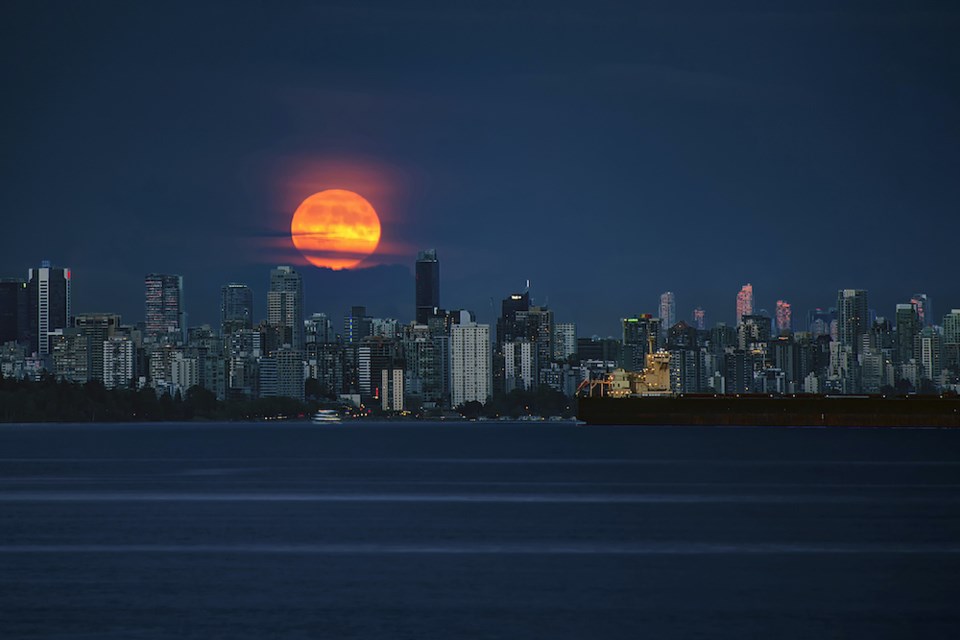If you enjoy moon gazing, you'll want to mark your calendars for an extraordinary celestial spectacle this May.
Not only will the heavens offer up an extra-large full moon, otherwise known as a "supermoon," but the astral event will also coincide with a total lunar eclipse.
This year, May's full moon, known as the "flower moon," is also considered a "supermoon."
What in the world does that mean?
No, the lunar behemoth won't possess supernatural powers or super-celestial abilities - it will simply look bigger.
But that's still pretty neat.
And if you missed last month's full pink supermoon, bear in mind that it didn't include the total eclipse--and that's the real treat. What's more, this month's supermoon is closer to earth, meaning that it will look slightly bigger.
The supermoon will appear at its fullest in Vancouver on Wednesday, May 26 at 4:13 a.m.
The lunar eclipse will commence slightly earlier, at 1:47 a.m., and the maximum eclipse will take place at 4:18 a.m.; it will end at 5:26 a.m.
Timeanddate.com shares a video of when the lunar eclipse will take place in the city, too.
Why is it called a "flower moon?"
According to the Old Farmer's Almanac, "The May full Moon marked a time of increasing fertility, with temperatures warm enough for safely bearing young, a near end to late frosts, and plants in bloom." They note that Native peoples would give distinctive names to each reoccurring full moon to mark the change of seasons. As such, many of these names arose when Native Americans first interacted with colonists.
With that being said, Space.com notes that the April full moon also goes by other names including the Full Sprouting Grass Moon, the Egg Moon, and the Full Fish Moon.
Since the pink moon qualifies as a "supermoon," it will look a whopping 15 per cent brighter and seven per cent bigger than a regular full moon due to its proximity to earth.
EarthSky notes that astronomers usually refer to "supermoons" as perigean full moons--a term that simply refers to the moon being "near earth."
Skywatchers should opt to travel as far away from city lights as possible in order to avoid light pollution that will obscure the clarity of heavenly bodies. While this works best in more remote places, anywhere that has a higher elevation will also provide more ideal viewing conditions.



